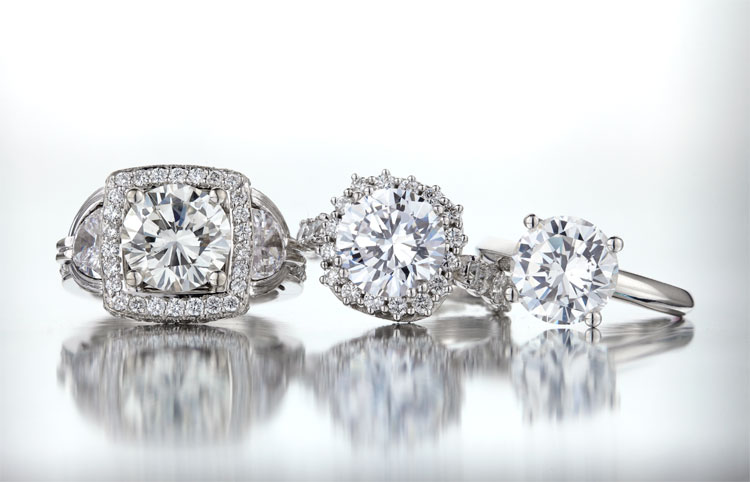Jewelry Photography & Retouching: Realistic Expectations & Budgets
In today’s highly retouched advertising world, people assume everything can be solved with a quick airbrushing in Photoshop. It’s widespread knowledge that yes indeed, most if not all advertising material goes under the loupe and gets a big changeover: Think of fashion photos where skin, hair and makeup are made blemish-less. Same goes for food, where stylists work tirelessly to make it look the most appetizing, and then more adjustment are done in post-production. The world of jewelry photography is no different, or maybe it is? Relying on post-production is a “must-do”. How does a Tiffany’s image look out of camera? How about some David Yurman pieces? Birks & Mayors? Everybody pays big money to get images perfect and stylized to their branding needs: gold color is adjusted; diamond contrast and colors fixed; stones copy and pasted to replace less-than-stellar ones, etc.
before
after
Fig. 1: Drag the slider to see a before and after of a 4.3 ct diamond engagement ring.
Unfortunately, because of the “that’s the way it is and done” nature of the industry, we think Photoshop can solve every problem and give you a “Tiffany’s” look. Before being a running EpicMind Studio, I was a programmer for a few years, having studied Computer Science and learned quite early on the motto: “Garbage in = Garbage out”. If you input bad data, you will get out bad data in return. In jewelry photography, the same can be applied. Start with very low quality photography, where you have blurred out portions, color casts, and bad lighting, unless you are ready to spend lots of money, there’s no way this will turn into your dream “Tiffany’s” image. Jewelry that is bargain priced, or has been heavily worn, and not fresh from production the so-called "vendor samples" requires lots of time and effort in post-production: hence money. These jobs are more doable, if the photography is alright (see Fig. 2)
before
after
Fig. 2: Drag the slider to see a before and after of a
heavily used "vendor sample" ring. Notice the scratches, and dirty stains.
Worse than the above case is when we are asked to retouch somebody else's photography where it suffers from very low resolution, may have blurred out portions, color casts, and bad lighting: unless you are ready to spend lots of money, there’s no way this will turn into a winning shot. Garbage in = Garbage out. See Fig 3. for a sample image I created using my unlock iphone 4 (you would be surprised what requests we sometimes get).
We tell our clients that most of the budget for catalog style photography is spent on retouching – especially on lower-end jewelry, but there are limits to what we are willing to do. We do get requests where we are asked to edit photos that they will provide us thinking it bring the images to the next level. I don’t say we can’t, I just say that the likelihood of it depends on the source image and how it was captured. Start with a great image, and you will end with a great image – at least that’s what I think.
Quality jewelry on the other hand, requires generally less retouching than lower-end. Although this is a general rule I’ve noticed, some higher-end clients still require that it is retouched above-and-beyond. Jewelry being used on backlight posters at shows such as JCK Las Vegas, that blow-up the jewelry to a 6’ size, will require tons of retouching no matter what – jewelry is not designed to be shown at larger than life sizes – some are machine made, some man made, and precision has its limits.
Bad jewelry photography
Fig. 3: A sample of bad lighting, focus and low resolution;
sometimes there's just so much retouching you can do within a budget.
I try to coach clients approaching me with “home brew” photos – it doesn’t hurt to learn to produce better in-house photos that we will need to retouch. They win in the end – getting amazing marketing material.
Finally, it’s got a lot to do with economics: if you want great work, you need to spend money to get it done right. If you cut corners, then more money it spent to make-up the problems incurred by the cut corner. Money isn’t the only driving factor, but with today’s economy, today’s jeweler is more price-conscious than ever and wants to stretch their marketing dollar further because of shrinking margins. Unfortunately, cutting corners when "first impressions" matters just isn't an option.
before
after
Fig. 4: Drag the slider to see a before and after of an image I did a couple of years ago. The client wanted a very "blue" oriented image, a little in the Tiffany's style.







